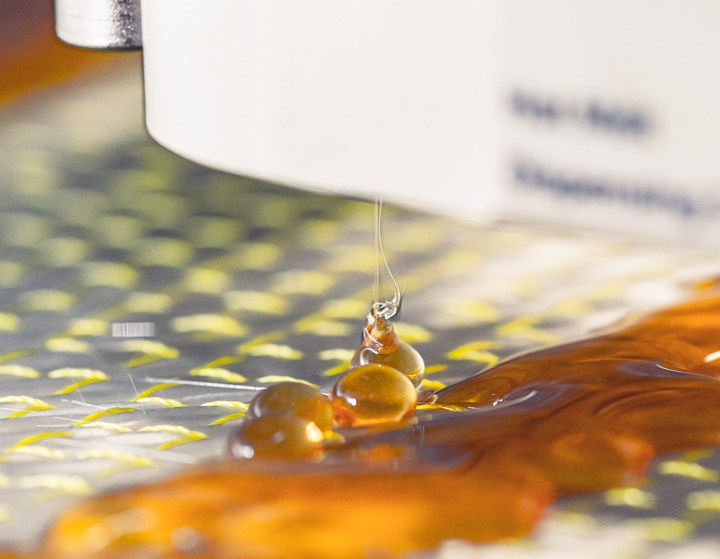Novel TFPprint process granted innovation award
Tailored fiber placement (TFP) process extension enables local matrix material impregnation to create multi-matrix FRP components.
In September, the 2021 Innovation Award, presented by the Leibniz Institute of Polymer Research Dresden e.V. (IPF, Dresden, Germany) and The Association of Supporters of the IPF, was granted to a new patented development in tailored fiber placement (TFP) called TFPprint. The award was given to the group Complex Structural Components, which included Prof. Dr.-Ing. Axel Spickenheuer, Simon Konze, Nicole Schmidt, Dr. Tales de Vargas Lisbôa and Sascha Bruk (IPF Institute Polymer Materials).
TFP is an established method developed by IPF to produce very stiff, lightweight components that can withstand loads for applications in the aerospace, automotive, medical technology and sports equipment industries (see “Tailored Fiber Placement: Besting metal in volume production”). The so-called TFPprint process, representing an extension of the TFP technology, is said to be the first reliable technology to produce duromeric multi-matrix fiber-reinforced polymer (FRP) composites. In addition, with the possibility of defined variation of the plastic matrix, it provides designers with a new, highly influential parameter for the development of new FRP components.
Potential for further application areas arise when reinforcing fibers are combined with several polymer matrix materials to create composite components. Thus, for example, locally flexural soft zones can be realized with the aid of elastomers. This is of interest, for example, for joints in orthopedic and rehabilitation technology, or for applications in soft robotics.
In order to be able to specifically influence the local component properties, the research group has added a generative impregnation process to the TFP machine. Together, with Germany-based Institute for Precision Engineering and Electronic Design of the Technische Universität Dresden (IFTE), E.F.M. GmbH, Mountek GmbH and Reha-Ot Lüneburg Melchior und Fittkau GmbH, Prof. Spickenheuer and his colleagues successfully developed a print head for this purpose.
The new process makes it possible to automatically apply an initial polymer matrix material (e.g. liquid uncross-linked elastomer material) at precisely defined positions directly after the fiber has been deposited. The textile fiber material is thus impregnated locally, and in the subsequent step the textile substrate can be completely saturated with a second matrix material in the previously dry areas using a classic infiltration process. A patent application has already been filed for the process [DE10 2019 110 462 A1].














.jpg;maxWidth=300;quality=90)

